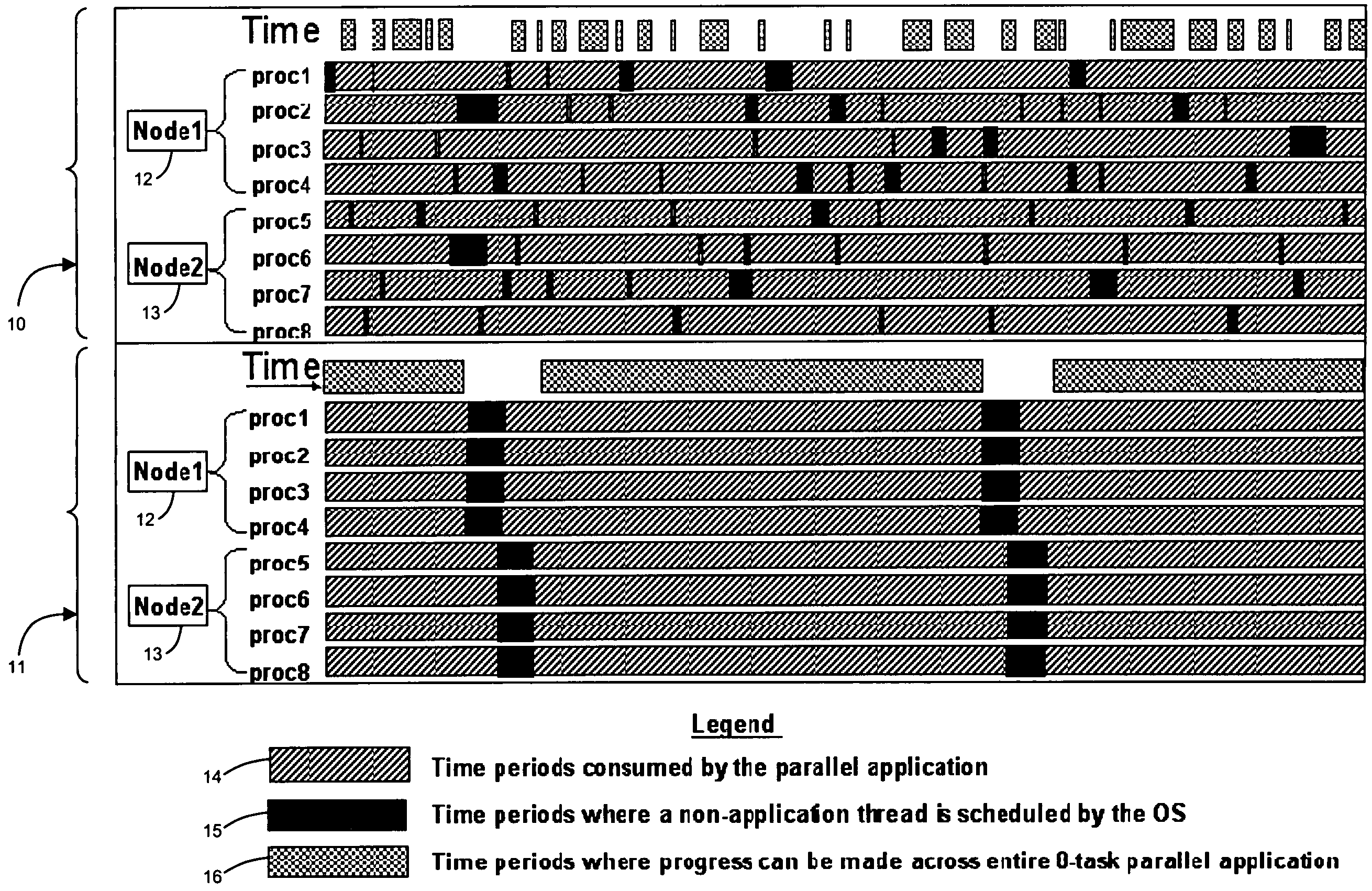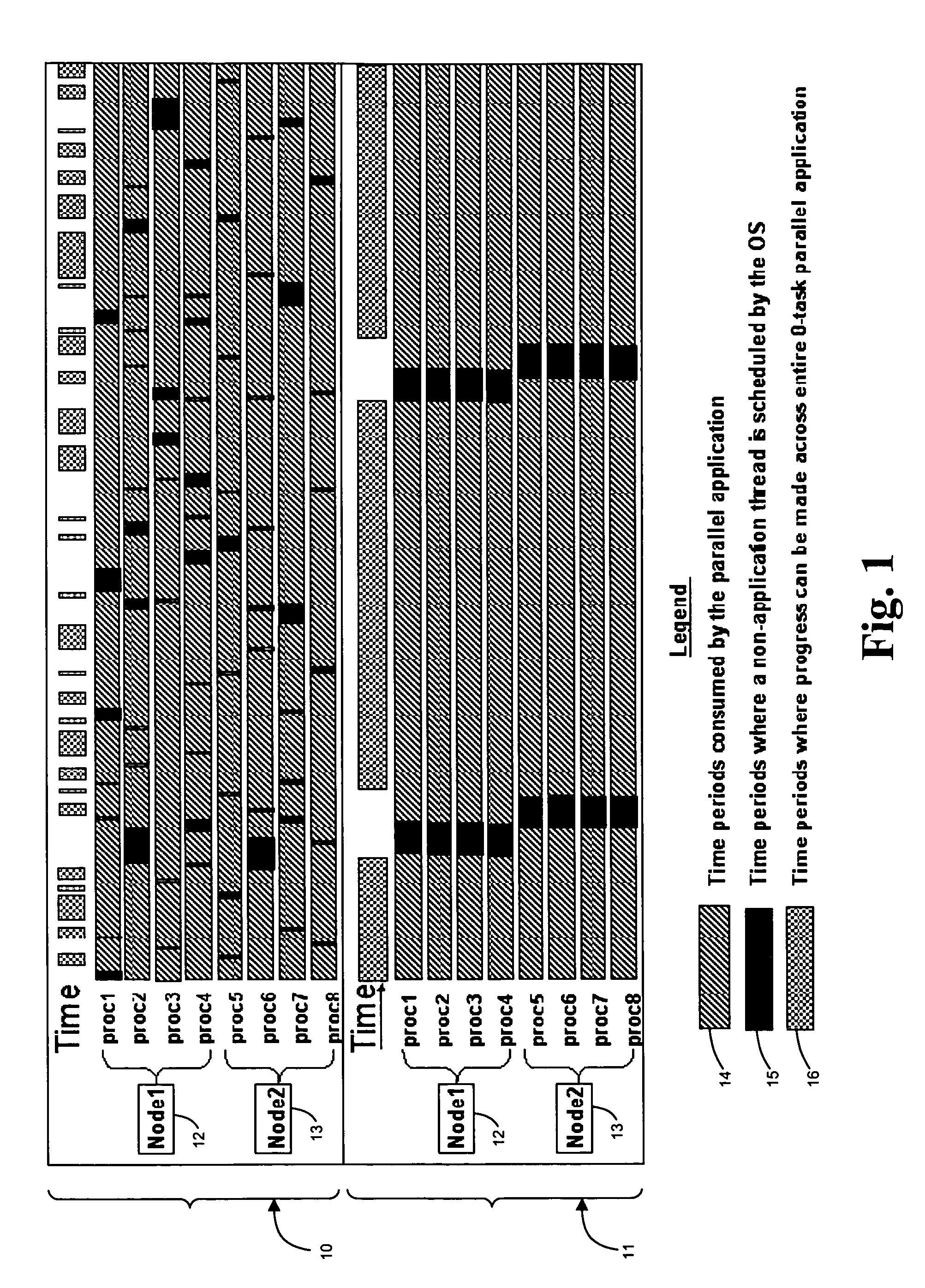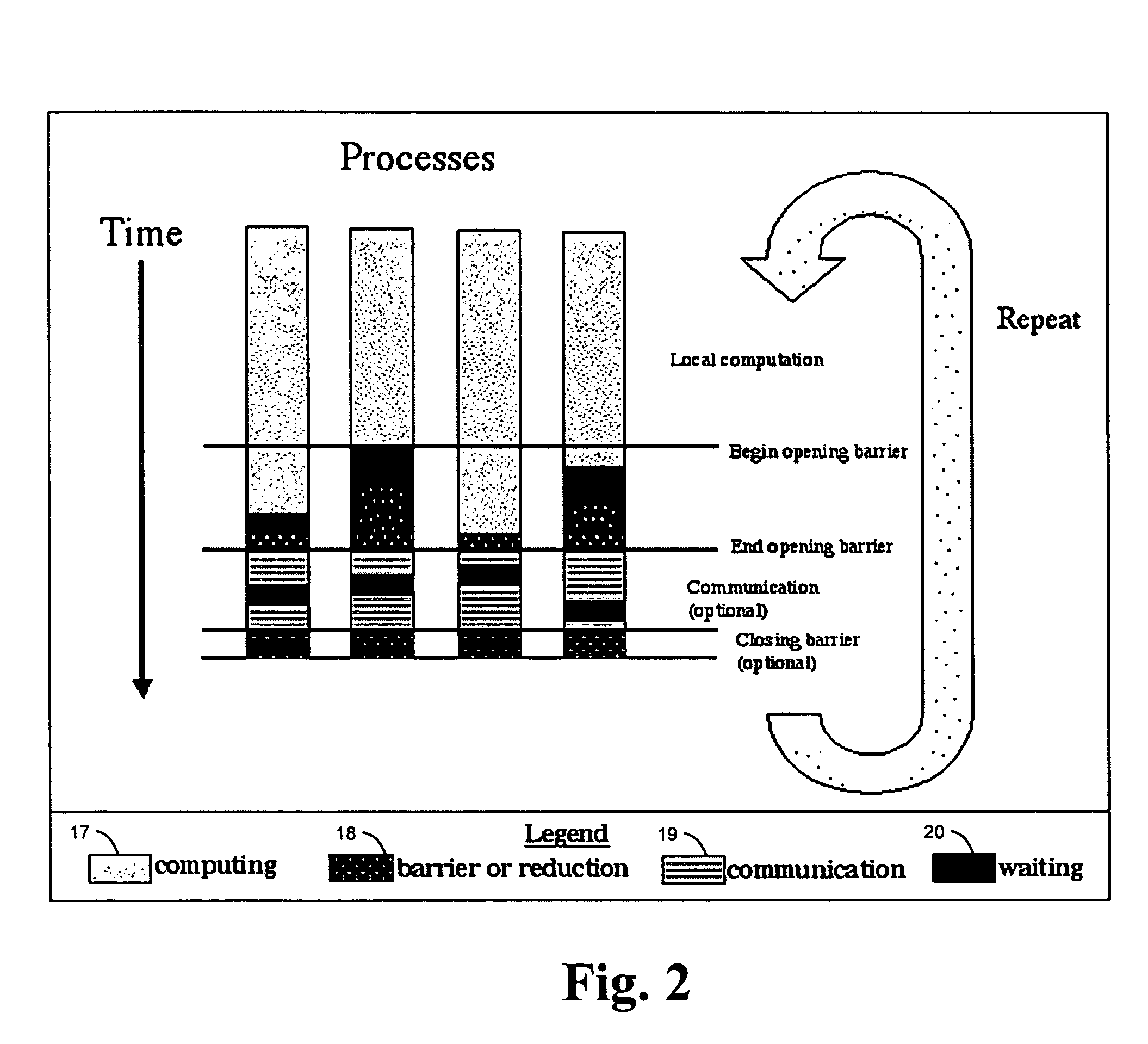Parallel-aware, dedicated job co-scheduling within/across symmetric multiprocessing nodes
a dedicated, parallel application technology, applied in the direction of multi-programming arrangements, program control, instruments, etc., can solve the problems of affecting synchronous collective operations can pose serious challenges to degrading so as to improve the performance and scalability of the dedicated parallel, improve the performance and scalability of the parallel application, improve the performance and s
- Summary
- Abstract
- Description
- Claims
- Application Information
AI Technical Summary
Benefits of technology
Problems solved by technology
Method used
Image
Examples
Embodiment Construction
[0025]The present invention is generally directed to a system and method which improves the scalability of dedicated parallel jobs by adding parallel awareness to the operating system and computing environment. In particular, the present invention improves kernel scheduling with an external time-based co-scheduler prototype to enable coordinated scheduling of system interferences and daemon activity on a node and across nodes. In the following discussion, the AIX operating system is used as the base operating system and kernel upon which the present invention may be implemented. This may be accomplished in AIX by the inclusion of additional modules and code, or by modifications of the existing AIX kernel to achieve the functionalities and performance levels as described herein, but is not intended to be limited to AIX or any other operating system.
[0026]Given that uncoordinated system overhead causes scalability problems, the present invention operates to reduces that overhead, i.e....
PUM
 Login to View More
Login to View More Abstract
Description
Claims
Application Information
 Login to View More
Login to View More - R&D
- Intellectual Property
- Life Sciences
- Materials
- Tech Scout
- Unparalleled Data Quality
- Higher Quality Content
- 60% Fewer Hallucinations
Browse by: Latest US Patents, China's latest patents, Technical Efficacy Thesaurus, Application Domain, Technology Topic, Popular Technical Reports.
© 2025 PatSnap. All rights reserved.Legal|Privacy policy|Modern Slavery Act Transparency Statement|Sitemap|About US| Contact US: help@patsnap.com



